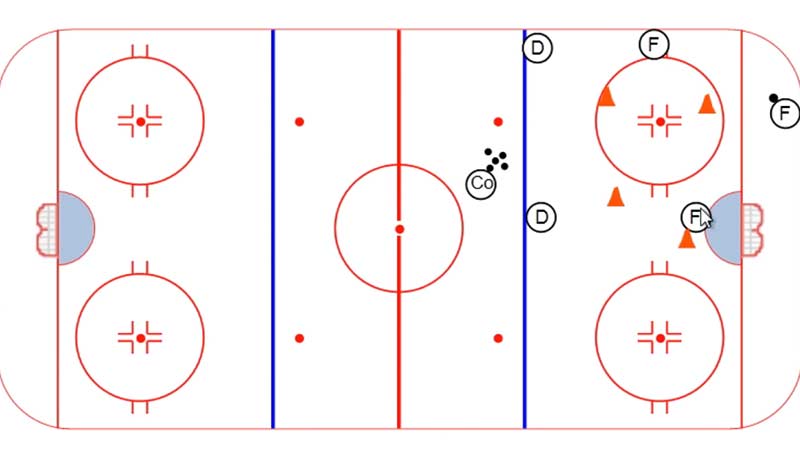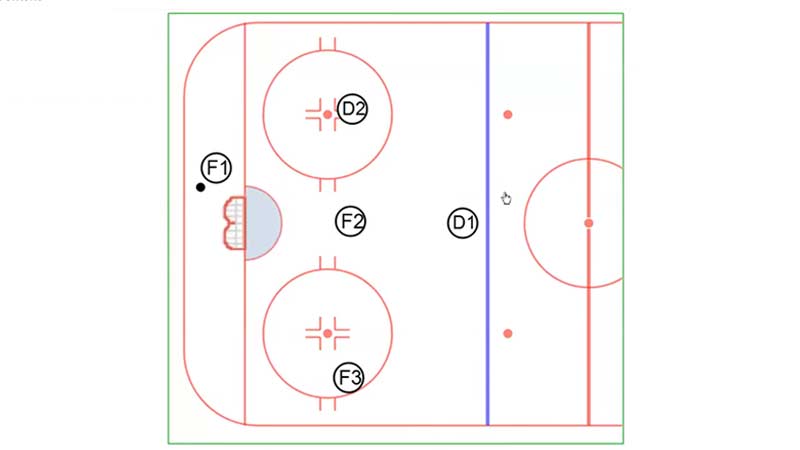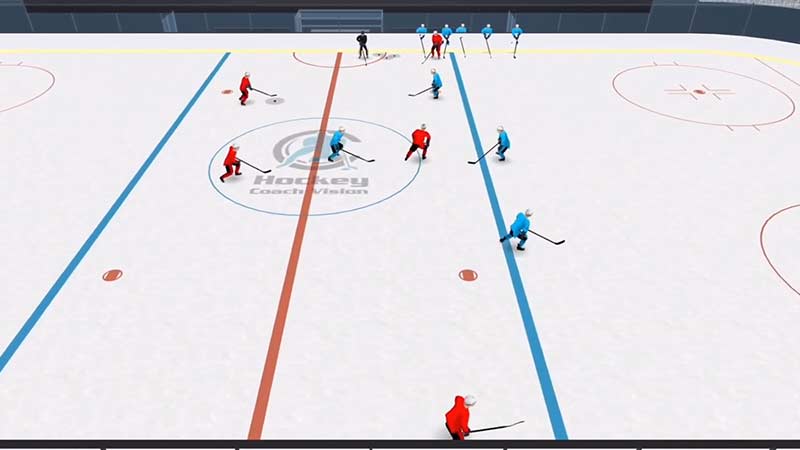In the fast-paced world of ice hockey, the power play stands out as a critical juncture where the game’s dynamics can shift dramatically.
Unlike many other team sports, hockey penalties result in a numerical advantage for the opposing team, creating strategic opportunities that can change the course of a match.
When a team is on a power play, they have the advantage of playing with more skaters than their opponents, leading to intense and game-altering moments on the ice.
This pivotal scenario, known as the power play, introduces a unique element to hockey strategy and gameplay. With the penalized team playing shorthanded, the power play opens up avenues for skilled execution and tactical maneuvers.
Understanding the intricacies of power play dynamics, from triggering penalties to executing strategic plays, is crucial for teams looking to capitalize on these advantageous situations and secure victories on the ice.
The Essence of the Power Play in Hockey
Defining the Power Play
In ice hockey, a power play is a critical strategic advantage that a team gains when their opponent is issued a penalty.
During a power play, the penalized player is sent to the penalty box, leaving their team shorthanded while the opposing team has a numerical player advantage.
This typically results in a 5-on-4 situation, giving the team on the power play a significant opportunity to score a goal.
The Power Play’s Role in Game Dynamics
The power play plays a crucial role in shaping the dynamics of a hockey game. It requires a high level of skill, coordination, and strategic play to capitalize on the advantage effectively.
Teams often have specific power play strategies and formations designed to maximize their scoring chances during this time.
A successful power play can shift the momentum of a game, demoralize the penalized team, and significantly impact the final outcome on the ice.
Triggering a Power Play
In ice hockey, triggering a power play occurs when one team gains a numerical advantage over the other due to a penalty. This penalty can result from various infractions, leading to designated players spending time in the penalty box.
Understanding the types of penalties and their implications is crucial for teams to capitalize on the ensuing power play opportunities effectively.
Minor and Major Penalties Explained
Minor penalties in ice hockey result in a player spending two minutes in the penalty box, creating a temporary player advantage for the opposing team.
In contrast, major penalties, lasting five minutes, pose a more significant challenge as the penalized team must defend against the opposing squad with a player advantage for an extended period.
The Impact of Player Ejections
Player ejections, often resulting from game misconduct penalties, have a profound impact on a team’s dynamics during a power play.
When a player is ejected from the game, their team must continue without a replacement for the remainder of the match, leading to strategic adjustments and potential vulnerabilities on the ice.
Understanding the consequences of player ejections is vital for teams to adapt their strategies and maintain competitive play during critical power play situations.
Executing an Effective Power Play

Strategic On-Ice Formations
Executing a successful power play in ice hockey heavily relies on strategic on-ice formations. Teams often implement various setups like the classic 1-3-1 formation, where one player positions at the top of the zone, three across the middle, and one near the net. This formation allows for quick puck movement and effective shots on goal.
Another common formation is the Overload, where players overload one side of the ice to create scoring opportunities by outnumbering defenders in that area. Understanding these formations and practicing them diligently is key to maximizing power play advantages.
Selecting Player Roles: The Specialists
Assigning player roles among the team’s specialists is crucial for a potent power play. Teams often designate key players for specific tasks, such as a playmaker who excels at setting up scoring chances, a sharpshooter for goal scoring, and a net-front presence for creating screens and deflecting shots.
Each player’s role is essential in executing a cohesive power play strategy. Understanding individual strengths and positioning players accordingly can lead to a harmonious and effective power play unit.
Skating and Positioning Dynamics
Skating and positioning dynamics play a pivotal role in the success of a power play. Players need to maintain constant movement to create passing lanes and confuse defenders.
Effective positioning near the net for rebounds, in the slot for high-quality scoring opportunities, and at the point for setting up plays is vital.
Maintaining proper spacing and staying in motion during the power play can disrupt the penalty-killing team’s structure and open up gaps for scoring chances.
By mastering these skating and positioning dynamics, teams can enhance their power play efficiency and capitalize on scoring opportunities.
Rules Governing the Power Play

Penalties and Their Consequences
In hockey, specific infractions can lead to penalties that result in power play opportunities for the opposing team.
A two-minute minor penalty is typically incurred for actions such as deliberately shooting the puck out of play, displacing the goal, or not having the right number of players on the ice.
On the other hand, a major penalty results in a five-minute power play for the opposing team. An example of a major penalty is when a player commits a serious violation like high-sticking that causes significant game impact.
Icing During a Power Play and Exceptions
During a power play, the shorthanded team may launch the puck to the opposite end of the rink without facing an icing call, except in specific scenarios. In youth hockey leagues in the US, icing rules are enforced even during power plays.
However, in most leagues, the shorthanded team can clear the puck to relieve pressure without the risk of incurring an icing violation, aiding in penalty killing strategies and time management during power plays.
The Power Play in Overtime Scenarios
Overtime situations in hockey bring a unique twist to power plays. Teams may find themselves with power play opportunities at critical moments, creating a high-stakes scenario where capitalizing on these advantages can lead to game-deciding goals.
Understanding how power plays operate in overtime requires teams to adapt their strategies to the heightened pressure and limited time frame, making efficient execution key to securing victories in sudden-death overtime situations.
Power Play Strategies and Tactics
Standard vs. Innovative Approaches
When it comes to power play strategies in hockey, teams often adopt either standard or innovative approaches to gain an edge over their opponents.
Standard strategies typically involve well-established plays and formations that have proven effective over time.
These may include common setups like the 1-3-1 formation, where one player operates at the point, three players position themselves along the perimeter, and one player plays in front of the net.
On the other hand, innovative approaches to power plays involve thinking outside the box and implementing creative tactics to outsmart the opposing penalty kill.
Teams using innovative strategies might experiment with unconventional formations, quick puck movement, or unexpected player positioning to confuse their opponents and create scoring opportunities.
By blending traditional tactics with fresh ideas, teams can keep their opponents guessing and maintain a competitive advantage during power plays.
Adapting to Opposing Penalty Kills
Adapting to opposing penalty kills is a crucial aspect of executing successful power plays in hockey. Teams must be able to read and react to their opponents’ defensive strategies to capitalize on scoring chances effectively.
Understanding how the penalty-killing team operates and identifying their strengths and weaknesses can help the power play unit make informed decisions on the ice.
Teams that excel at adapting to different penalty kill styles can adjust their tactics on the fly, exploiting gaps in the defense and capitalizing on mistakes.
Whether it’s facing an aggressive forecheck or a tight-box penalty kill, the ability to adapt and make quick decisions is essential for maintaining pressure and generating scoring opportunities during power plays.
By analyzing the opposing penalty kill structure and making real-time adjustments, teams can increase their chances of converting on the man-advantage and achieving success in critical game situations.
Power Play Impact and Statistics
Measuring Power Play Success
Teams gauge their power play efficiency by assessing their power play success rate, a key metric crucial for victory.
A power play success rate exceeding 20% often indicates a competitive advantage, increasing the likelihood of winning games.
Notably, players excelling in power plays, like Alex Ovechkin of the Washington Capitals, frequently dominate goal-scoring charts, showcasing the pivotal role power plays play in offensive strategies.
Historical Case Studies of Memorable Power Plays
The history of power plays in the NHL provides a treasure trove of iconic moments, such as the Boston Bruins’ spectacular showcase during the 2019 Stanley Cup Playoffs.
Their impeccable passing, strategic positioning, and space utilization resulted in a remarkable power play success rate, propelling them to the final.
This exemplar highlights how skill, strategy, and psychological advantage intertwine in the realm of power plays, underscoring their significance in shaping game outcomes.
Frequently Asked Questions
Why are power plays significant in ice hockey?
Power plays create a numerical player advantage, offering strategic opportunities to score goals and gain momentum.
What are the main types of penalties in ice hockey?
Major penalties result in a player being ejected for five minutes, while minor penalties lead to a player being sidelined for two minutes.
How can teams execute an effective power play?
Teams can maximize power play advantages by strategically selecting player roles, utilizing formations like 1-3-1, and capitalizing on scoring chances.
What is the impact of icing during power plays?
Icing during power plays can result in face-offs in the defensive zone, disrupting offensive momentum and creating scoring challenges.
Conclusion
Understanding the intricacies of power plays in hockey is essential for teams aiming to gain a competitive edge. From strategic formations to player roles, each element contributes to the success of executing power plays effectively.
By adapting to opposing penalty kills and maximizing scoring opportunities, teams can significantly impact game outcomes.
The history of power plays in the NHL showcases iconic moments where skill, strategy, and psychological advantage intertwine to create memorable victories.
As teams continue to innovate and refine their power play strategies, the importance of efficient execution and adaptability remains paramount. Embracing the dynamic nature of power plays can elevate a team’s performance and lead to success on the ice.








James Felix